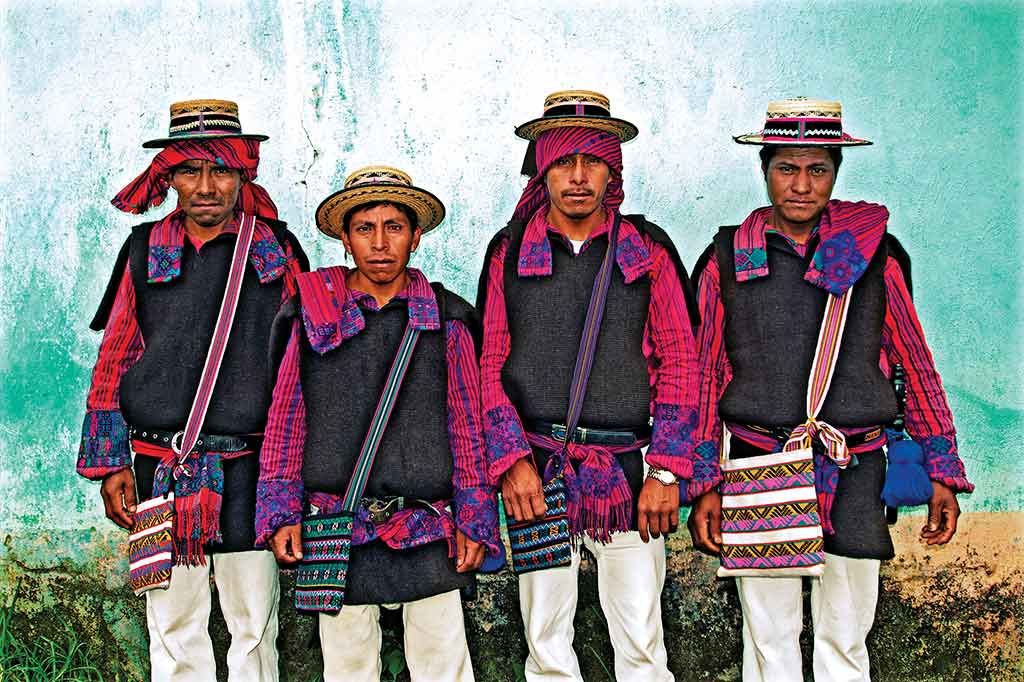Guatemala’s Pre-Colonial Mayan Inhabitants
Guatemala’s history is complicated and fascinating, though it often reads like a tragic novel. A basic understanding of its history is a crucial element for the well-informed traveler hoping to get the most out of a visit to this mystifying land of culture and contrasts.

Prehistory
It is generally accepted that the first inhabitants of the North American continent came in waves by way of a land bridge across the Bering Strait connecting Siberia to Alaska, some 25,000 years ago. The migrants continued to make their way southward, possibly using boats to assist them, and eventually came to populate, albeit thinly, large portions of the Americas occupying a diverse range of climates. It is believed passage via the Bering Strait was intermittently open until about 10,000 years ago when the last Ice Age ended, submerging the land bridge with rising sea levels.
Mayan Civilization
The people that settled the New World eventually grew in population and transitioned from hunter-gatherers to nascent agricultural societies. The developing civilizations then made a clear transition from hillside swidden agriculture to more intensive forms of cultivation, including terrace farming, the construction of drainage ditches, and the development of fertilizers, which in turn produced large food surpluses. With greater food security, the population gradually became more specialized in its individual occupations, paving the way for advances in writing, art, architecture, and mathematics. A common language and universal belief system are thought to have existed throughout the Mayan region, providing a necessary social cohesion that served as a catalyst for the development of a larger civilization.
Today, the remains of this civilization can be seen throughout northern Guatemala’s Petén region at sites such as Tikal, Uaxactún, Yaxhá, Piedras Negras, and El Mirador. The inhabitants of these Mayan cities, now lying in ruins, spent their time trading, stargazing, and fighting wars before abandoning their cities, which were later reclaimed by the surrounding jungle.

Our knowledge of the Maya comes largely from the edification of large carved monuments, or stelae, which document the lives of the individual city-states’ rulers and include historical events associated with their reign, such as battles, marriage alliances, and successions. The Maya built their temples and palaces atop previous constructions; what we see today is literally the pinnacle of their progress.
Of particular note is what is sometimes referred to as the Classic Mayan collapse, giving the impression that the civilization collapsed and vanished into thin air. This is certainly not the case. The Mayan civilization proper indeed came crashing down for reasons that are becoming increasingly evident, and the Maya simply dispersed into other parts of present-day Mexico, Guatemala, Belize, and Honduras while falling prey to increasing cultural and military dominance from invading central Mexican Toltecs.
The site of modern-day Guatemala City was originally occupied by Kaminaljuyú, whose commercial dominance was established largely on the strength of its strategic location for the trading of obsidian and jade.
The Preconquest Picture
Toltec-Mayan Yucatán cities, such as Chichén Itzá and Uxmal, finally gave out sometime in the late 13th century and were abruptly abandoned. At about the same time, the Guatemalan highlands were invaded by groups of Toltec-Maya, though it is uncertain whether they are the product of a mass exodus from the Yucatán cities or a new group from the Toltec heartland in the Gulf of Mexico. In any case, their arrival in the Guatemalan highlands signaled a transition from the existence of relatively peaceful, religious village societies to ones increasingly secular and warlike.
Quickly establishing themselves as a ruling elite, the Toltec invaders founded a series of competing empires including the K’iche’, Kaqchikel, Tz’utujil, Mam, Ixil, Achi’, and Q’eqchi’, among others. Interestingly, these and other tribes encompassing the highland indigenous groups continue to form the basis for today’s cultural landscape, with differentiation based on their individual dialects.
Among these tribes, the K’iche’ and Kaqchikel emerged as dominant forces, a rivalry the conquering Spanish would later use to their advantage. Prior to the arrival of the Spanish, the highland region was engulfed in a widespread power struggle between rival groups for cultivable land to feed an increasing population.
